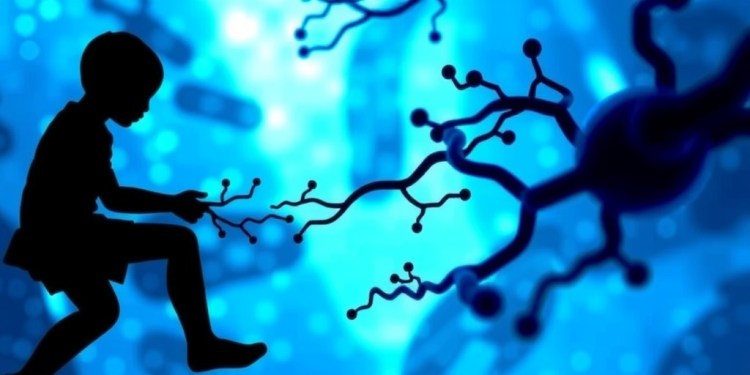Human pluripotent stem cells (hPSCs) are emerging as a fundamental resource in regenerative medicine due to their exceptional potential to differentiate into various cell types. For hematology, their promise lies in the possibility of generating hematopoietic stem/progenitor cells (HSPCs), which are crucial in the formation of blood cells. Despite theoretical optimism, the practical application of hPSCs in creating functional HSPCs still faces significant limitations and challenges. These hurdles stem mainly from the insufficient understanding of the signaling pathways that guide the specification of HSPCs, which serve as the drivers of blood development.
Recent research highlighting these limitations reveals that while both in vitro-derived HSPCs and their in vivo counterparts exhibit similar cell-surface markers, substantial transcriptional and functional disparities exist between the two. This discrepancy raises concerns about the efficacy of hPSCs when scaled for therapeutic applications, including transplantation and disease modeling. Professor Mo Li from KAUST, along with his collaborator Professor Juan Carlos Izpisua Belmonte at Altos Labs, has emphasized that addressing these transcriptional inconsistencies could enhance the therapeutic use of hPSC-derived HSPCs.
In-depth analysis of the transcriptomic variations between in vivo and in vitro-derived HSPCs has revealed significant insights. Utilizing RNA sequencing, researchers observed that genes linked to the WNT signaling pathway are markedly downregulated in HSPCs sourced from in vivo environments compared to those cultivated in vitro. This downregulation of the WNT pathway after the hemogenic endothelium stage is pivotal for the maturation of HSPCs. The evidence suggesting that this WNT signaling reduction is consistent across species further underscores its universality as a critical factor in hematopoietic development.
Exploration into the regulatory mechanisms of WNT signaling revealed promising experimental strategies to mitigate the limitations of in vitro-derived HSPCs. The research team employed small-molecule inhibitors and genetically modified pluripotent stem cells to manipulate the WNT pathway as well as its downstream effectors during the later stages of hematopoietic differentiation. The results were striking: inhibiting WNT signaling not only accelerated the generation of HSPCs in vitro, but also enhanced myeloid chimerism in immunocompromised mice. This indicates a crucial relationship between WNT signaling inhibition and improved functional outcomes of the generated HSPCs.
As research delved deeper into the intrinsic deficiencies of in vitro-derived HSPCs, findings became even more significant. The inability to appropriately downregulate WNT signaling in cultured HSPCs results in dysregulated expression of HOX genes, early activation of lineage-specific genes, and unregulated metabolic activity characterized by heightened mitochondrial function. These intrinsic flaws serve to distinguish hiPSC-derived progenitor cells from healthy endogenous HSCs. However, the study uncovered that partial correction of these aberrations might be achievable through targeted WNT signaling inhibition, which positively influences the differentiation and functionality of the HSPCs.
The implications of these findings are profound, as they identify an actionable strategy to enhance the differentiation potentials of hPSC-derived HSPCs. By better aligning these cells with their natural counterparts, researchers are forging pathways to increase their applicability in clinics. Such advancements could bolster therapeutic interventions for various hematological disorders and beyond, utilizing the regenerative capabilities of stem cells.
Moreover, this body of research paves the way for further investigations into optimizing conditions for hPSC use in regenerative medicine. Subsequent studies may explore not only the WNT signaling pathway but also the interconnected networks of other signaling mechanisms implicated in HSPC development. As science continues to unravel the complexities of hematopoiesis, collectively, the efforts promise to lead to groundbreaking innovations in stem cell therapies.
In conclusion, while hurdles remain in fully harnessing the potential of hPSCs to generate HSPCs that effectively mimic their in vivo counterparts, the advances highlighted in recent research mark significant progress. With ongoing investigations targeting key signaling pathways and gene regulation, the prospect of translating these findings into clinical applications brings renewed hope for effective stem cell-based therapies in the treatment of blood disorders and other diseases.
While the scope of in vitro-derived cell applications is being better understood, it is evident that a comprehensive strategy combining targeted interventions, in-depth genetic analysis, and potentially combinatorial approaches could yield the functional HSPCs necessary for life-saving therapies. The future of stem cell research indeed looks promising, driven by insights that pave the way for more robust and clinically applicable regenerative strategies.
Subject of Research: Hematopoietic Stem/Progenitor Cells
Article Title: Current Limitations and Challenges of In Vitro-Derived Hematopoietic Stem/Progenitor Cells
News Publication Date: 2024
Web References: Science China Life Sciences
References: Article DOI link: 10.1007/s11427-024-2816-0
Image Credits: Science China Life Sciences
Keywords: Hematopoietic Stem Cells, Pluripotent Stem Cells, WNT Signaling, RNA Sequencing, Regenerative Medicine
Tags: advancements in regenerative hematologyblood cell formation mechanismschallenges in stem cell therapydevelopmental signaling pathwayshematopoietic stem progenitor cellshuman pluripotent stem cellsin vitro differentiation techniquesregenerative medicine potentialRNA sequencing in stem cell researchtherapeutic applications of hPSCstranscriptional discrepancies in HSPCstranscriptomic analysis in hematology





